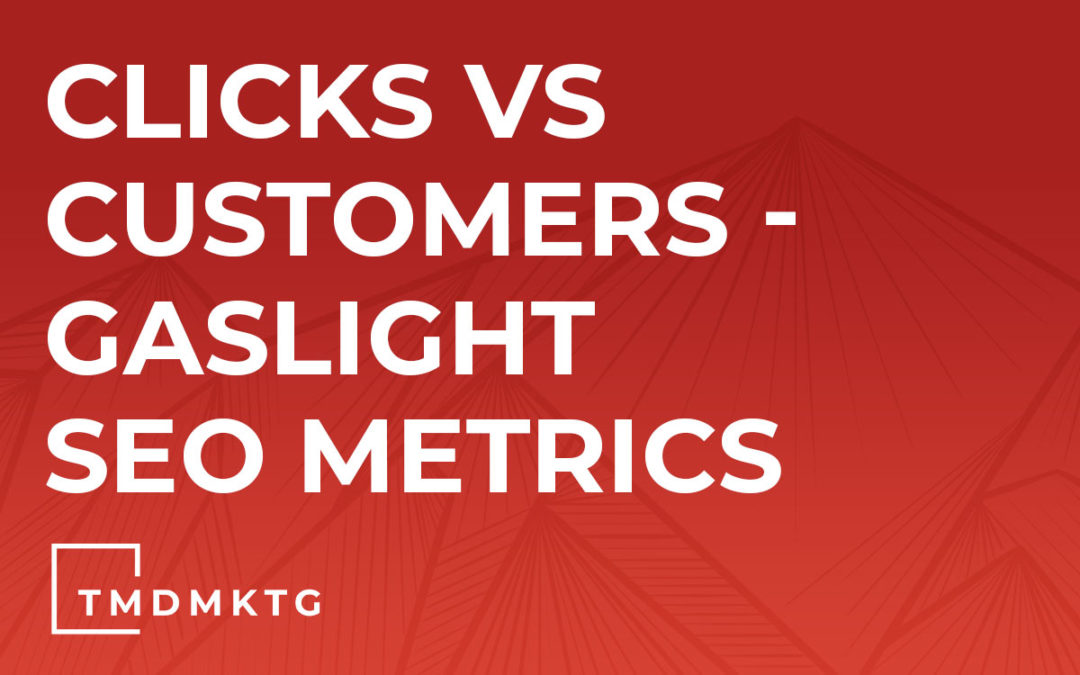It’s a very popular term getting thrown around these days, gaslighting. In fact, on more than one occasion I’ve found myself answering the question, what is the definition of gaslighting? A fairly new term, its origins, according to Dictionary.com, “The term gaslighting originates from a 1938 play called Gas Light by Patrick Hamilton. It was eventually adapted into a film, compounded into a single word as Gaslight, in 1944. The story features a conniving and murderous husband who tries to conceal his true identity from his wife.” Whereas I’m sure this is a riveting adaptation, the main contribution to the zeitgeist is the term Gaslighting, which has come to ultimately mean making someone feel crazy in order to forward your agenda. This certainly happens in personal interactions, but more common than not is at the board room. You might think, I’m a shrewd enough customer to never to taken for a ride, but there are many out there with buzz words to spare and an armoury of metrics to wow you during a quarterly presentation, but leave you wondering why their presented analytics do not match with real life conversions or performance. Here are three SEO Gaslight metrics to be aware of in the future.
Vanity Keyword Phrases – Within every SEO campaign, there are a handful of vanity keywords that you can look at and be damn proud of. Those phrases drawing high difficulty scores, millions of competing sites but yet you managed to get to the top of the SERPs. You even search the phrases occasionally for a sense of victory. But, buyer beware… having excellent SERP placement for a handful of vanity terms is fine, but why isn’t the needle moving. Because you can’t measure success on vanity terms, but on converting terms. One of my clients is #1 on Google for their offered services & the state in which they operate. That’s awesome… However, that term does not generate the impressions that local SEO optimization terms do. So why these vanity phrases look great on Google’s first page & on a PowerPoint, the conversions will not match the vanity placements.
Clicks vs Customers – It’s a warm, fuzzy feeling to see the audience line charts slowly going up for the year, even spiking in certain areas. All our hard work is paying off; traffic is increasing, session durations are improving, bounce rate is dropping, but still this is not reflected in the ultimate conversion numbers. It’s an awkward conversation when you are reviewing the YoY SEO numbers and see unquestionable increases in organic click traffic but not conversions.
There can be a slew of contributing factors, most of which would not be SEO-related. User experience (UX) and conversion rate optimization (CRO) can easily be the scapegoats in this situation, but attention should certainly be placed on what type of clicks your campaigns are targeting. There is no debate that not all clicks are created equal, so do the homework and make sure your keyword phrase intent is matched with those keywords you’re targeting.
Many times we’ve seen clients bragging about their record traffic numbers only to realize that 70% of their traffic is going to older blog posts that are receiving interested traffic in your blog topic, but not in your service or product necessarily.

In the example above, a lawn care service company is driving organic click traffic through informational interior pages (top landing pages listed). Whereas these pages are bringing people into the site through interior information pages, these customers’ intent is not motivated by a need for a lawn care service, but rather to satisfy a curiosity concerning the fastest growing trees & shrubs. As shown, roughly ¼ of traffic is going to the homepage with salient lawn care needs met and goals achieved at a 5% conversion rate yielding 86% of our total conversions. The remaining top landing pages are merely answering questions followed by a relatively swift bounce rate; homepage – 67% vs aggregate top informational landing pages @ 93%.
Intent of Traffic – One of the biggest mistakes, and oftentimes a voluntarily overlooked mistake, is not fully taking into account the intent of the organic click traffic. It is very easy to look at traffic coming into your site and be happy without digging into what this traffic does once they have clicked-through.
One of the easiest illustrations of this comes from one of our industrial cleaning equipment clients. We continuously have to contend with making sure our keywords target a very narrow portion of the market… pressure washers. What does this phrase mean to us? We assist in selling industrial pressure washers (have to give a plug) for commercial use. Now, this is what Google latent semantic indexing (LSI) & potential customers could deduce as intent:
- A company consisting of pressure washers (service)
- Individual pressure washing services
- Residential home-use pressure washers
- Power washing services
- Etc….but not a company selling industrial-grade commercial pressure washers.
So because of this, a great job might be being done with SEO and SERP placements that are ultimately leading consumers down the wrong user intention funnel path to your site and offerings resulting in increased bounce, exit rates & no conversions.
So if you find yourself in a quarterly or yearly meeting discussing SEO optimization costs and the analytics might not be measuring up & you feel like you might be going crazy…don’t worry, there’s a name for that.
Contact TMD Marketing, a Utah SEO agency in Layton for a free assessment of your business marketing and advertising needs 801-829-9181.
Article by: Jonathan Hall – TMD Marketing SEO Strategist


Recent Comments